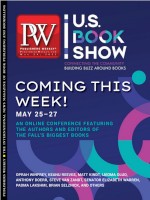In The Case of the Murderous Dr. Cream: The Hunt for a Victorian Era Serial Killer (Algonquin, July.), Jobb studies a physician turned poisoner.
What’s your best explanation for why Thomas Neill Cream turned to murder?
Cream’s medical school training, which gave him the expertise to save lives, also gave him the knowledge and skills he needed to take lives. One of his professors described physicians as being “God-like” guardians of their patients. It’s as if, in Cream’s warped mind, this was an invitation to play God and decide who lived and who died. He had a callous disregard for the lives of others and seems to have delighted in knowing his victims would die agonizing deaths from strychnine poisoning. It’s impossible, after the passage of so much time, to pinpoint why a young man, who had every advantage in life and seemed to be embarking on a promising medical career, became a killing machine.
Was Cream clever or just lucky not to have been caught earlier?
He was incredibly lucky that investigators failed to connect the dots and realize that his letters threatening blackmail revealed details of the poisonings that only the murderer could have known. I’ll never forget discovering Cream’s letters in his Scotland Yard file at Britain’s National Archives and the eerie feeling of holding the original documents he had written and employed in his murderous schemes.
How do you understand Scotland Yard’s blunders in Cream’s case?
It’s hard to believe that, barely three years after the Ripper murders, Scotland Yard was oblivious to a serial killer preying on London prostitutes. But poor communication, misplaced evidence, and overlooked clues allowed Cream to poison four women and try to kill a fifth. Police charged an innocent man with murdering the first woman he killed, then mistakenly concluded she had committed suicide. A doctor’s incompetence meant the death of Cream’s second victim wasn’t reported as a homicide. And when he killed two women in one night, their deaths were initially chalked up to food poisoning. The force’s shocking lack of vigilance drew harsh criticism from the judge who presided over Cream’s trial in 1892.
Do you see any parallels between Cream and Robert Louis Stevenson’s Dr. Jekyll and Mr. Hyde?
The parallels are obvious. At the start of his medical career, [Cream] was a respectable, churchgoing citizen by day and a lecherous drunkard at night—a real-life Dr. Jekyll who morphed into a killer as callous as Mr. Hyde.



 Volume 268
Issue 21
05/24/2021
Volume 268
Issue 21
05/24/2021





